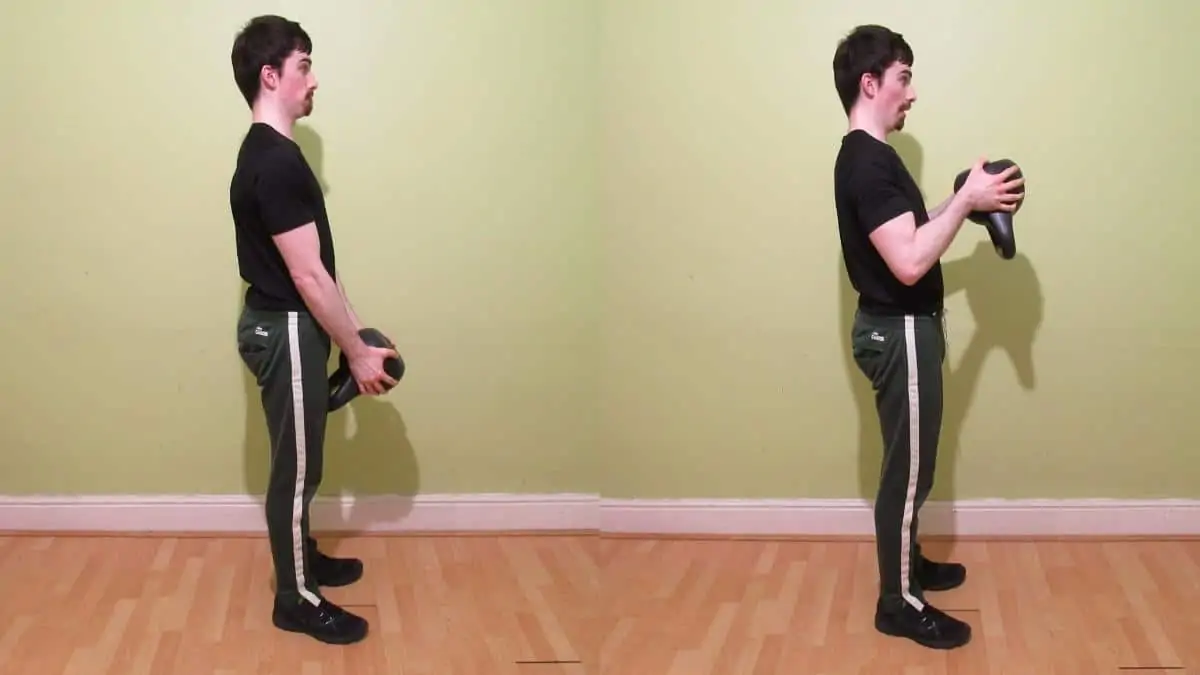The kettlebell crush curl is a great exercise for training the biceps brachii and improving your grip strength. It’s also convenient if you don’t have two dumbbells to do regular curls with a kettlebell because you only need one kettlebell to make the movement work.
That’s the good thing about using kettlebells for your biceps. You’re not tied down to any particular gym or exercise because kettlebells are so accessible and versatile. The only downside to them is that it can be hard to increase the resistance regularly if you don’t have access to kettlebells that ascend in small increments.
Kettlebell crush curl exercise details
- Also Known As: Kettlebell squeeze curl
- Main Muscles: Biceps brachii
- Secondary Muscles: Brachialis, brachioradialis, forearm flexors, forearm extensors
- Exercise Type: Strength
- Exercise Mechanics: Isolation
- Difficulty Level: Beginner
- Equipment Needed: Kettlebells
How to do kettlebell crush curls
- Hold a kettlebell by your sides with both hands. The handle should be facing down toward the floor.
- Curl the weight toward your chest.
- Keep curling until your forearms touch your biceps.
- Squeeze your arms for a moment and then lower the weight under control until your elbows are locked out.
- Repeat for 3-5 sets of 8-15 reps.
Kettlebell crush curl benefits
The KB crush curl has some unique benefits that the regular curl simply doesn’t offer. So here’s what you can look forward to when you include this exercise in your training program.
Stronger grip
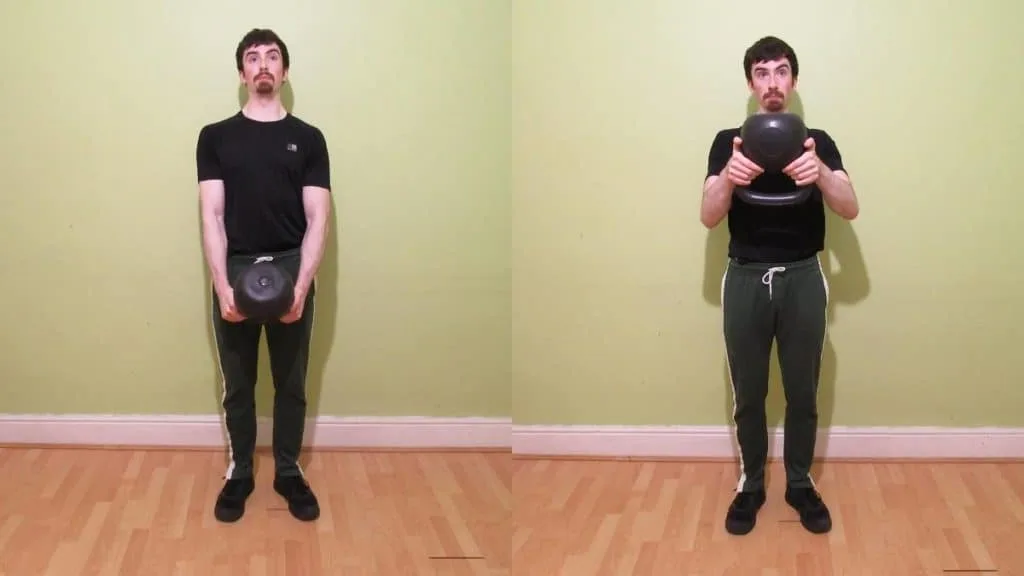
As you get stronger at kettlebell crush curls, you’ll be lifting kettlebells with larger diameters. This forces your gripping muscles to work harder in order to hold onto the weight.
So not only will you be building your biceps by doing these exercises, but you’ll also be strengthening the muscles of your forearms, which is priceless for improving your performance on compound movements like deadlifts and rows.
Of course, if you just want to isolate your biceps, then this benefit automatically turns into a drawback. But, presuming that you care about your grip strength, the KB crush curl is a great exercise that you don’t see many people perform, especially not outside of functional training circles.
You can also click the link to learn whether you should do kettlebell or dumbbell curls for optimal bicep development.
Better brachialis development
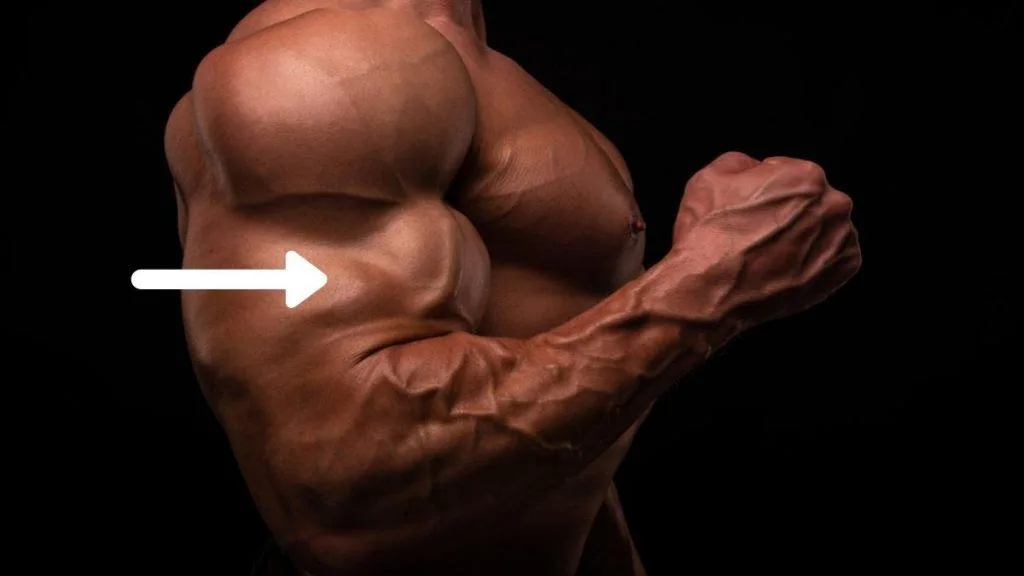
Kettlebell crush curls have you lift with a neutral grip. This naturally makes your biceps a bit weaker and thus reduces their ability to produce force.
As a result, your brachialis has to pick up the slack and do more of the lifting. This is definitely a good thing considering that many trainees have relatively poor brachialis development, especially compared to that of their biceps.
You can also slow down your reps a bit to increase the brachialis activation even more seen as it’s a slow-twitch muscle. As such, it responds incredibly well to higher repetitions and slow and controlled negatives.
If you want to absolutely maximize your brachialis and brachioradialis activation, however, then doing reverse curls with kettlebells is your best bet because this exercise places your biceps at a greater mechanical disadvantage than hammer curls.
Improved brachioradialis strength
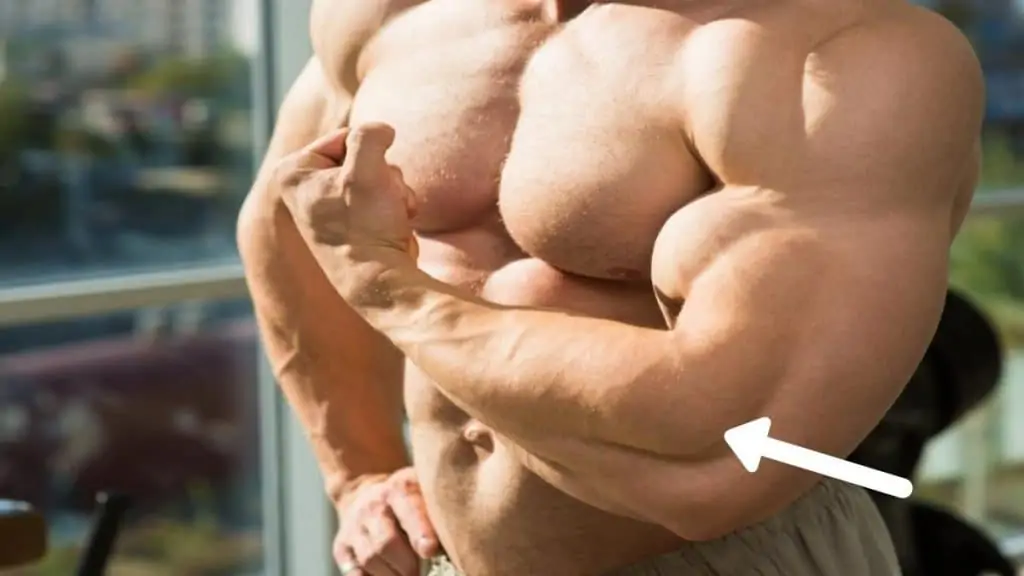
As mentioned, the kettlebell crush curl trains the brachioradialis.
What’s less obvious and far more surprising is that far too many lifters neglect this muscle because they think that biceps curls are enough.
That’s not true unless you have top-tier brachioradialis genetics. In order to train this large (or potentially large) muscle optimally, you need to do some kind of curl with either an overhand or neutral grip so that your biceps don’t dominate the movement.
So in this regard, kettlebell crush curls are an excellent exercise for the job.
Should you do kettlebell crush curls?
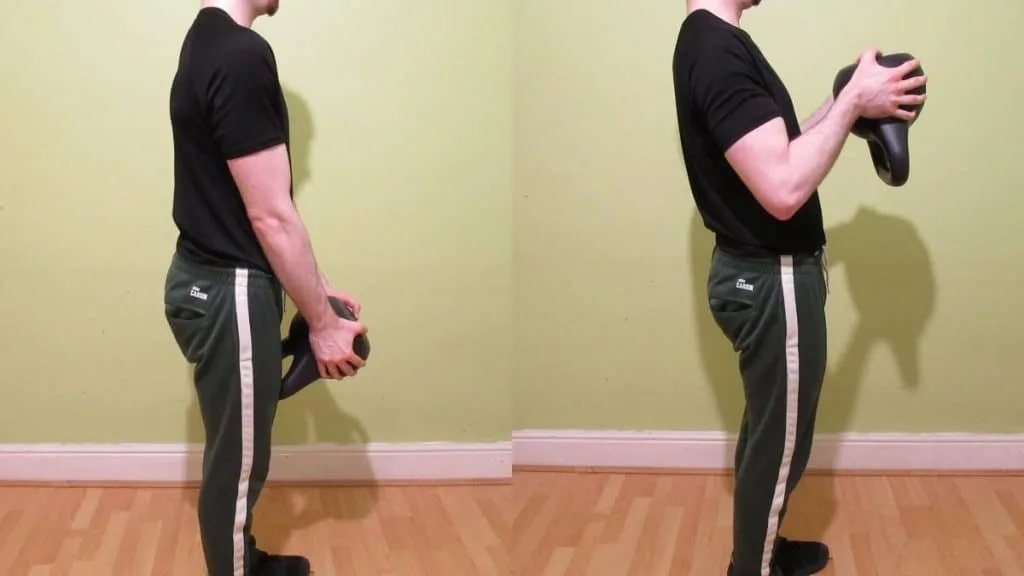
The kettlebell crush curl is a highly convenient movement that you can do with just one kettlebell and a tiny amount of workout space. Besides building your biceps, brachialis, and brachioradialis, this often overlooked exercise also strengthens your forearm and gripping muscles, especially if you’re curling large-diameter kettlebells.
References
- Polish, J. (2020, January 16). 15 Kettlebell Moves To Improve Your Grip Strength And Stability. BarBend. https://barbend.com/kettlebell-moves-strength-stability/
- Fast-Twitch vs. Slow-Twitch Muscles. (2021). ACTIVE.Com. https://www.active.com/fitness/articles/fast-twitch-vs-slow-twitch-muscles

